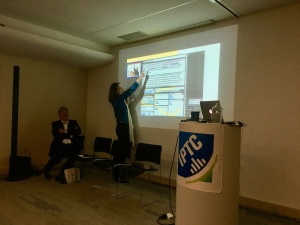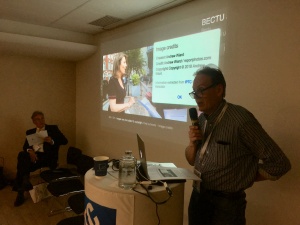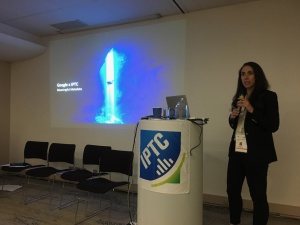Categories
Archives
Home and away teams
alignment attribute.Pre-game actions
<actions>
<action sequence-number="1" team-idref="team_9572" type="esacttype:remove" comment="Nuke"></action>
<action sequence-number="2" team-idref="team_6134" type="esacttype:remove" comment="Inferno"></action>
<action sequence-number="3" team-idref="team_9572" type="esacttype:choose" comment="Cache"></action>
<action sequence-number="4" team-idref="team_6134" type="esacttype:choose" comment="Train"></action>
<action sequence-number="5" team-idref="team_9572" type="esacttype:remove" comment="Overpass"></action>
<action sequence-number="6" team-idref="team_6134" type="esacttype:remove" comment="Dust2"></action>
<action sequence-number="7" type="esacttype:remaining" comment="Mirage"></action>
</actions>
Statistics for eSports teams, players and tournaments
scoping-label on outcome-totals in SportsML:<team-stats score="16" event-outcome="speventoutcome:win"> <outcome-totals scoping-label="T" wins="4" /> <outcome-totals scoping-label="CT" wins="12"/></team-stats><player-stats> <rating rating-value="1.11"/> <stats> <stat stat-type="esstat:kills" value="15" /> <stat stat-type="esstat:headshot" value="6" /> <stat stat-type="esstat:assist" value="4" /> <stat stat-type="esstat:flashassist" value="2" /> <stat stat-type="esstat:deaths" value="11" /> <stat stat-type="esstat:KAST" value="78.3" /> <stat stat-type="esstat:ADR" value="68.4" /> <stat stat-type="esstat:FKdiff" value="0" /> </stats></player-stats>stat construction with stat-type and value we can handle any type of statistic.esstat: and esacttype: in these examples do not currently exist in the IPTC NewsCodes catalog but could easily be set up if needed. It might be necessary to have different prefixes for different type of eSports games. But that would require some more investigation.
Last week’s 2019 IPTC Photo Metadata Conference was again hosted in association with the CEPIC Congress. This year’s conference was held in a slightly rainy Paris but at least that meant that we didn’t mind staying indoors in late May.
The event kicked off with an introduction from event chair Stéphane Guérillot from AFP, who is also on the Board of IPTC and Chair of the IPTC Standards Committee. The theme of the afternoon was “putting IPTC metadata to work for your image collections” and the emphasis on practical outcomes was a constant refrain.

The first panel was around the question of “do we still need IPTC Photo Metadata?” Michael Steidl, lead of the IPTC Photo Metadata Working Group started off by presenting results from the IPTC Photo Metadata surveys that the Working Group has undertaken earlier this year. Lúí Smyth from Shutterstock showed how metadata has helped them to organise millions of photos from thousands of sources. Isabelle Wirth, photo editor at AFP discussed how the agency uses IPTC Photo Metadata along with other IPTC standards such as News Codes and NewsML-G2 to make content searchable and shareable for their clients. And independent photographer and 3D photogrammetry expert with Deep3D, Simon Brown, explained how metadata was crucial for creating 3D views of sunken shipwrecks via tens of thousands of still photographs and some innovative software. In Simon’s words: “For more than one 3D project, projects with multiple contributors, or projects conducted over a longer period of time, IPTC entry becomes mandatory.”

The next session examined how creating and editing IPTC Photo Metadata could be improved. Sarah Saunders representing CEPIC presented results from the IPTC Photo Metadata surveys of both image suppliers and software makers showing that metadata usage has grown in sophistication but still varies greatly between independent photographers and large companies. Andrew Wiard, photographer and member of the British Press Photographers’ Association, spoke with passion about how we could improve the handling of photo metadata once it leaves the photographer’s desk, a constant goal of the Photo Metadata Working Group and which will form part of our work plan for the rest of 2019. Mayank Sagar from Image Data Systems showed some exciting tools with videos showing how their AI algorithms can detect objects from luggage and handbags for commuters to brands and logos on advertisements in sports footage, and talked about the current limits of AI classification and future issues such as how to handle artificially synthesised images. Andreas Gnutzmann of popular photo management software Fotoware showed how their system is moving to the cloud, putting metadata at its core even more than previously.

The third session looked at the end-user side and how the industry can benefit from photo metadata. Brendan Quinn of IPTC presented the Photo Metadata Crawler project, examining how news publishers around the world are embedding photo metadata in the images used on their sites. Michael Steidl showed results of the Photo Metadata Working Group’s updated analysis of social media systems and sharing platforms, which will be shared through an IPTC news article in the coming months. And Anna Dickson of Google gave us an update on her history working with images as photo editor at Huffington Post and Dow Jones among others, and discussing how Google are working with metadata and the IPTC, including our shared challenges of encouraging more site owners to publish embedded metadata so that it can be picked up by Google Search and other services. At the event, Google also announced some very interesting features that are currently in the pipeline.
Michael Steidl and Stéphane Guérillot closed out the event talking about the work the the IPTC Photo Metadata Working Group would be undertaking this year as a result of the discussions and of the survey results.
All slides from the day are available in PDF format from the event page, both to IPTC members and non-members.
Key findings from the Photo Metadata surveys will be shared in future news posts, so please watch this space for updates.
More information about the Google presentation and their proposed new features around image metadata is available to all IPTC members who have joined the Photo Metadata Working Group.
Thanks to all the speakers, to CEPIC for their assistance in hosting the conference, and to everyone who attended for making the event such a success!
At the IPTC Spring Meeting in Lisbon, the IPTC Standards Committee signed off on version 3.1 of SportsML.
Updates include:
round-numberattribute added tobaseEventMetadataComplexType- Added
events-discardedtooutcomeTotalsComplexTypeandresult-statustobase3StatsComplexTypeto support events where players or teams can discard some of their results. - Fixed examples to use the correct qcodes
nprt:given,nrol:shortetc for names - Corrected description of
distanceinactionAttributes
You can download the ZIP Package of SportsML 3.1 with XML Schemas and documentation included.
Development of SportsML is open to collaboration. Your feedback on the SportsML Users Forum is welcome!
We’re excited that the biggest week in the photo metadata calendar has arrived – the IPTC Photo Metadata Conference 2019 will be held in Paris this Thursday, 6 June.
We are looking forward to hearing from some IPTC members: Andreas Gnutzmann from Fotoware, Lúí Smyth from Shutterstock, Isabelle Wirth of Agence France Presse and Michael Steidl, Chair of the Photo Metadata Working Group and honourable member of IPTC. Stéphane Guerrilot, CEO of AFP Blue will be chairing the event.
We will also be hearing from independent photographer Andrew Wiard representing the British Press Photographer’s Association (BPPA), plus Anna Dickson, Visual Lead, Image Search at Google attend, bringing her expertise as one of Google’s experts on images but also with a history leading photography teams at Dow Jones and Huffington Post. Mayank Sagar from Image Data Systems will be speaking about the latest developments in automatic image tagging, and Simon Brown of Deep3D will look at the photographer’s view around embedding metadata.
Michael Steidl and Sarah Saunders will be presenting the results of the 2019 Photo Metadata Survey, where we have obtained the views of image creators, publishers and software makers regarding embedded image metadata.
Brendan Quinn, Managing Director of IPTC will be presenting the IPTC Photo Metadata Crawler which looks at usage of embedded photo metadata among news publishers.
We’re looking forward to analysing the world of photo metadata from the perspective of image creators and editors, software makers, publishers, search engines and end users.
There are still some tickets available, so please join us! Attendance is free for CEPIC Congress attendees, but if you just want to come for the IPTC event on Thursday afternoon you can register using this form for €100 + VAT.
See you there!